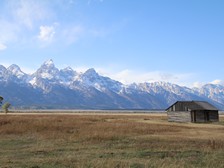You want to visit Seoul, South Korea’s capital city? I recommend a 5 day itinerary that will allow you to discover most of the city and its surroundings.
ITINERARY - SOUTH KOREA: here is the full itinerary for a tour of South Korea.

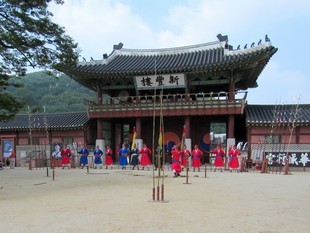
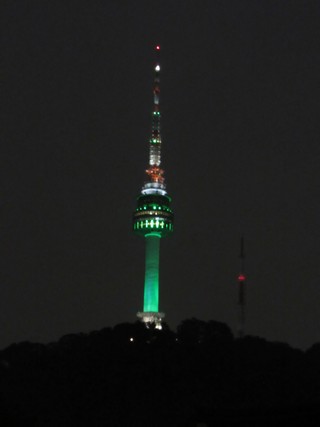
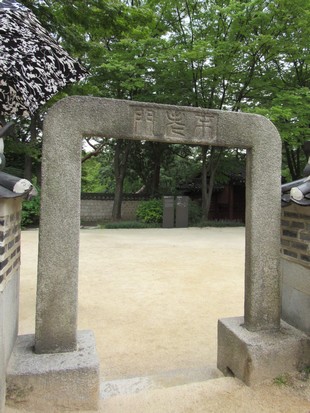
Seoul is a pretty large city, but the main sightseeing places are located just around the same area. However, it’s quite difficult to visit most of the city on foot. Even using the subway you’ll need to walk a lot. Most of the time, you’ll to need to walk 1km between the entrance of the subway and the train platform.
With that being said, let’s go to see the details of the schedule:
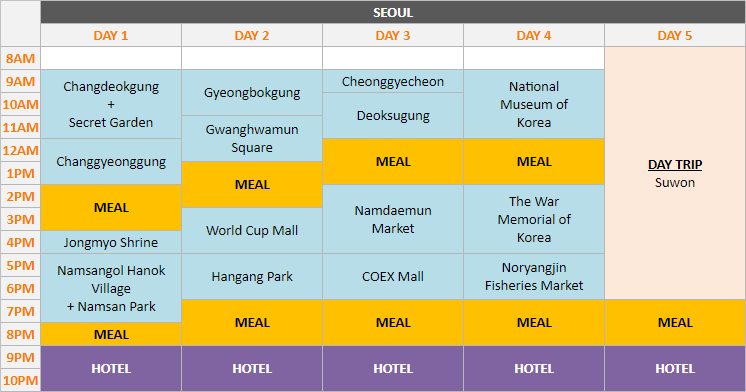
Day 1: Changdeokgung Palace and its surroundings
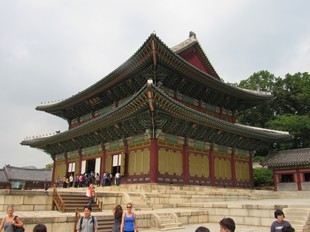

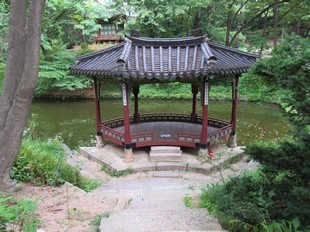

Among the most interesting places to visit in South Korea, there are the old palaces “gung”. Even if they’re not genuine (rebuilt 400 years ago after the Japanese occupation), they show pretty well the Korean culture.
I recommend starting with the biggest and the most interesting one, the Changdeokgung. There’s also a garden to visit. The nearest subway station is « Anguk » (exit 3).
Tip: what you need to know is that the palace entrance fee is 3,000 won (about $3) and the entrance fee to the secret garden is 5,000 won (about $5) making a total of 8,000 won (about $8). But there is a pass that includes entry to Seoul’s 4 palaces (Changdeokgung + Secret Garden, Changgyeonggung, Gyeongbokgung and Deoksugung) and to the Jongmyo Shrine, that costs only 10,000 won (about $10). So it’s a really good deal! This pass can be purchased at any of the 4 palaces ticket booth. It is made of coupons, one for each palace.
And if you’re over 64 years old, most of the visits will be totally free upon presentation of your passport.
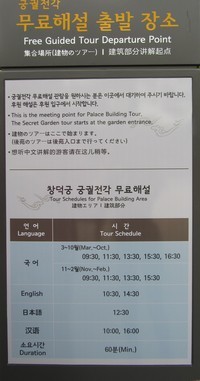
To visit the palace, I highly recommend taking the free guided tour which is available in English because you will learn a lot (in most Seoul’s tourist sights, there are free guided tours which are really interesting but the only drawback is that you have to be there at the exact starting time of the tour, if not, you’ll need to wait for the next one which can be a few hours later…). Then for the Secret Garden, it can only be visited with a guided tour. It is possible to make a booking on the website, it’s free and it doesn’t commit to anything. To me, it’s useful to make a booking when it’s a busy period because if the tour is full, you’ll need to wait for the next one. But it isn’t mandatory at all, I’ve seen people who didn’t booked, just bought tickets and were able to take the tour.
Tip: be careful, palaces are often closed on Mondays or Tuesdays.
Then, when you’ve finished the tour of the palace and its garden, you can go to visit the Changgyeonggung which is paired with the Changdeokgung. A path connects the two palaces together.

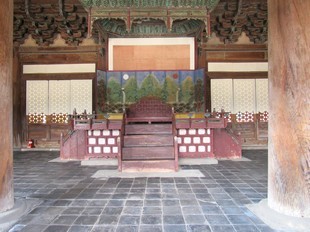
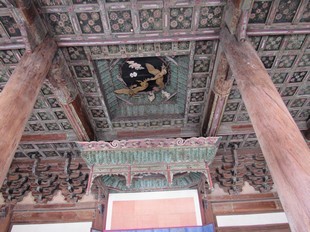
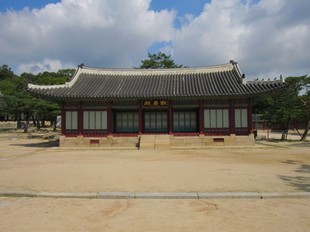
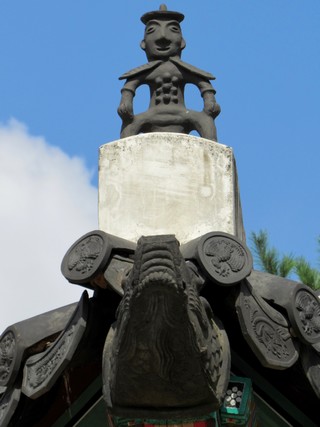
Then go to have lunch in the area before going to visit the Jongmyo Shrine which is located next door. You can go there on foot. Visiting the shrine takes about 45 minutes.
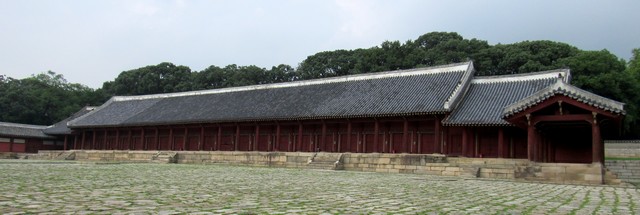
Once you’ve finished visiting the shrine, take the subway to go to the « Chungmuro » station (exits 3 or 4). Then head to the Namsan Park which houses the Namsangol Hanok Village.
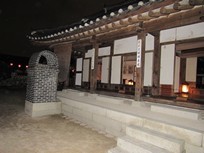
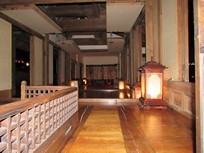
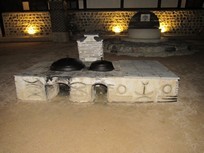
After visiting the village, take your time to stroll through the park to get a panoramic view of the city from the top of the hill and you can eventually get into the N Seoul Tower.

Day 2: Gwanghwamun area
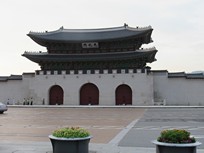
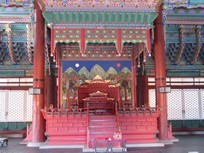
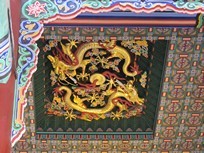
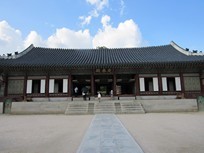
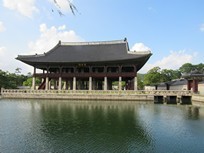
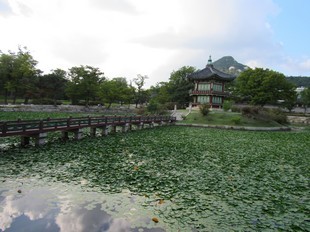
For your second day in Seoul, begin by going to the « Gwanghwamun » subway station (exit 2) to visit Gyeongbokgung which is located opposite to two large statues. Once you’ve finished visiting the palace, I recommend visiting the National Folk Museum which is free and located into the palace gardens. It is very interesting and shows the lifestyle of elders Koreans.
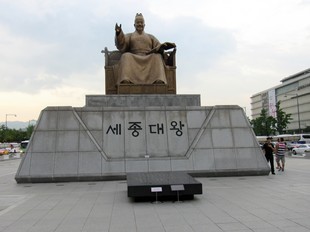
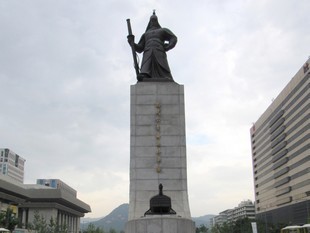
Then, while leaving the palace, head to the two statues located in front of it, Admiral Yi Sun-Shin on one side and King Sejong the Great on the other side. After taking photos of the 2 statues, you can go to visit the museum which is located below the statue of King Sejong (a door in the back of the statue leads to the basement). Over there you’ll be able to learn the foundings of the Korean language (the Hangeul), to discover the lifestyle of the elders and also to take a picture sitting on the King’s throne!
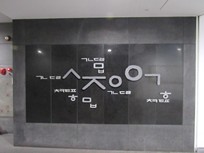

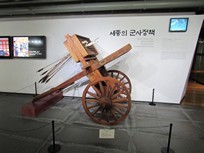
Then, after lunch, go to the World Cup Stadium which is located at the « World Cup Stadium » subway station (exit 1 or 2). It’s the largest stadium in Asia, that had been built for the FIFA World Cup held in South Korea in 2002. After this sporting event, the stadium was redesign into a mall. So you’ll be able to stroll there.
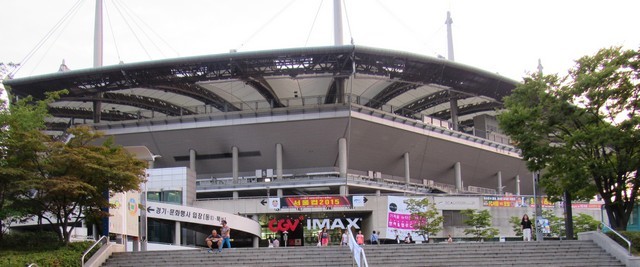
And for the end of the day, I recommend going to Hangang Park which is located on the shore of the Han River. The park is very big and has several entrances, so try not to get lost! Once there, don’t miss the Banpodaegyo (bridge) Fountain. It’s a bridge that throw water on the side. It’s a kind of water show.
Day 3: visits and shopping
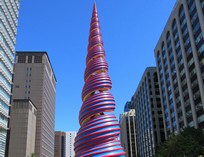
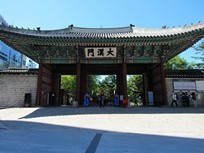
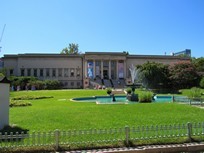
To begin this third day, go to the « City Hall » subway station which is located opposite to the « Gwanghwamun » subway station. You’ll recognize the place when you’ll see the two large statues. Then, before visiting the Deoksugung, go through the Cheonggyecheon plaza. You’ll see a giant candle and a fountain (a kind of cascade).
Then head to the Deoksugung and take your time to visit the palace. In addition, within the palace grounds, you can visit the National Museum of Contemporary Art.
Tip: don’t miss the changing of the guard held outside the palace, at 11 am, 2 pm, and 3.30 pm (everyday except mondays).
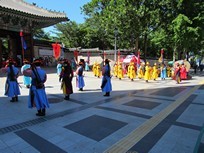

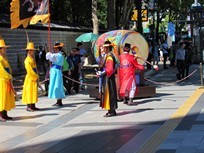
Then, after lunch, head to Namdaemun Market which is a big market where you can find great deals. The market is located at the « Hoehyeon » subway station.
And for the end of the day, head to the COEX Mall which is the largest underground shopping complex in Asia. It’s located at the « Samseong » subway station which is directly connected to the mall, but make sure to take the right exit (exit 5 or 6).
Day 4: museums
For your fourth day, I recommend visiting two museums that are very interesting but also free. First, the National Museum of Korea, that tells the history of Korea. It’s located at « Ichon » subway station (exit 2). Take the underground path that is connected to the museum.
Then, after lunch, go to visit the War Memorial of Korea. It’s located at the « Namyeong » subway station (exit 1).
And for the end of the day, you can go to the Noryangjin Fisheries Market, which is very large. You will see full of different species of fish, shellfish, alive octopus… To get to the market, it’s really simple, get off at « Noryangjin » subway station and take the exit 1. Then walk over the bridge for about 100 m and you will be there.
Tip: for a fresh and delicious meal, in the market, you will be able to find restaurants who can cook the fishes you have bought.
Day 5: Suwon Fortress!
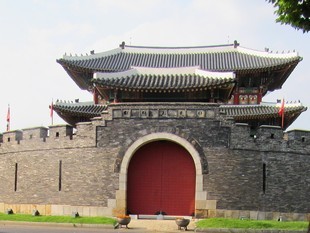
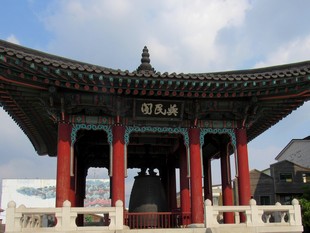
While visiting Seoul, I highly recommend spending an entire day in the walled city of Suwon. It’s easily reachable by subway, simply get off at « Suwon » station and take the exit 1. Then head straight to the tourist office. They are very friendly and knowledgeable. They’ll tell you which bus you need to take to get to the fortress. And they will also tell you all the activities you can do during your day.

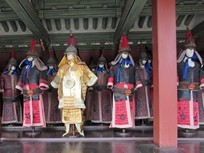
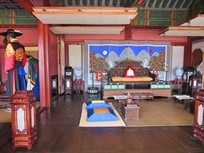
You’ll see that there are many activities you can do, it’s not that expensive and it’s really worth it, like the dragon train that takes you to visit several different places.
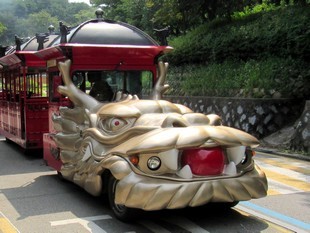
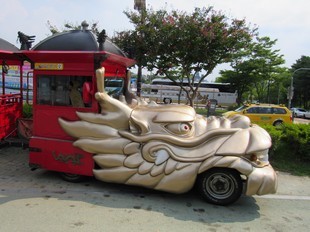
Tip 1: when I went there, it was a special month (september). So everything was free. Perhaps you’ll also have that chance :)
Tip 2: I recommend bringing food for lunch because there is no restaurants or places where you can buy food into the fortress.
Tips
Transportation
Airport
It’s really simple to reach Seoul from Incheon Airport because it’s directly connected to the city by the subway (line 1). The only drawback is that there is no escalators neither lifts during the whole way, so if you have a lot of luggage you’ll have to carry it by yourself throughout the stairs.
But of course you can also take a taxi.
Tip: try to bring all the documents you need with you because at the airport you’ll probably won’t be able to connect to the free Wi-Fi. According to the woman working at the tourist office, too many people are connected to the Wi-Fi so it doesn’t work very well. Moreover, there are not a lot of places in Seoul where you can connect to the free Wi-Fi.
Subway
The most convenient way to visit Seoul is by taking the subway because it’s easy to reach any places in town. The stations name are written in English, so you just need to find which line to take, the direction and then, to get off at the right station.
However I highly recommend avoiding the bus because everything is written in Korean. And don’t think that you can ask the driver, because he will, for sure, not be able to speak English (but he will know how to ask you to pay!).
About the subway, you have 3 options to buy tickets:
- M-Pass: it’s a special pass for tourists that can only be bought at the airport. It allows you to make 20 trips per day (but you won’t need that much) for 10,000 won a day (more days your pass lasts, cheaper it is). But my advice is just: do not take this pass! Because if you are planning to take another transportation than the subway, such as the bus, for example, the card won’t be recognized by the machine even if the bus you want to take is included into the pass. And as the driver doesn’t speak English and that no one knows what this pass is anyways (not even the tourist office), it’s a waste of time and money because you will have to pay the bus again if you want to take it. Moreover taking the subway in Seoul takes so much time. You’ll need to walk at least 1 km between the entrance of the subway and the train platform. So, most of the time, it’s quicker to walk than to take the subway. For sure, you’ll never reach 20 trips a day!
- T-Money card: it’s the most convenient way because you won’t need to queue everytime you want to buy a ticket. You put money on the card and then simply tap on when you want to take the subway. The fare will automatically be deducted from your card. And to add credit, simply find a machine (there is one at each station) and then follow the instructions displayed on the screen (they accept cash). But the card costs 2,500 won, you must also add 500 won for the application fee, so it costs 3,000 won in total. Then each trip will cost 1,250 won.
- single tickets: one trip costs 1,350 won, which is only 100 won more than a trip with the T-Money card. Considering the fact that you need to buy the card for 2,500 won and to add 500 won for the application fee, it means that you’ll need to take the subway at least 30 times throughout your holiday to start saving money on your trips. In my opinion, buying single tickets is the best option.
Change money
To me, bringing cash to change it over there is the best way to get South Korean won. And to do so, one of the best place to change money in Seoul is at « Seoul Station ». You’ll find the currency exchange office next to the ticket booth. Just take a number and wait in line. The rate is good, it’s fast and convenient.
Restaurants
As everything is written in Korean, the only thing you‘ll be able to do, is looking at the pictures to order your food.
Hotels
In Seoul, hotels are not really expensive, just have a look on booking websites. However, be careful, it’s possible that if you book a room for 3 people, the third person will have to sleep on the floor on a kind of carpet.
Back then, I stayed in 2 different hotels:
- a first one when I arrived in Seoul
- a second one after returning from my trip to Busan
So the first hotel was the Amare Hotel. It’s good value for money.
Description: rooms are large and the bathroom is provided with a bathtub. There are self-service hot and cold drinks at the reception.
Price: about $50 per night for 2 people.
Location: the hotel is located close to the subway station « Jongno-3-ga », and is also close to visit areas that are reachable on foot.
How to get there: to reach the hotel from the subway station, take the exit No. 1.
| Pros | Cons |
|---|---|
| big rooms | - |
| the price | - |
| very convenient location | - |
The second hotel was the Hostel Korea 11th Changdeokgung. It’s actually a youth hostel but you can book individual rooms. It’s good value for money.
Description: rooms are comfortable and functional. The bathroom is provided with a shower. Breakfast is included, it’s a sort of small buffet, but you’ll have to clean the dishes after eating.
Price: about $50 per night for 2 people.
Location: the hotel is located halfway between « Anguk » and « Jongno-3-ga » subway stations, and is also close to sightseeing places, which are within walking distance.
How to get there: to reach the hotel from the « Jongno-3-ga » subway station, take the exit No. 6. And from the « Anguk » subway station, take the exit No. 4.
| Pros | Cons |
|---|---|
| comfortable rooms | - |
| breakfast included | - |
| the price | - |
| very convenient location | - |
Thanks for reading :)




